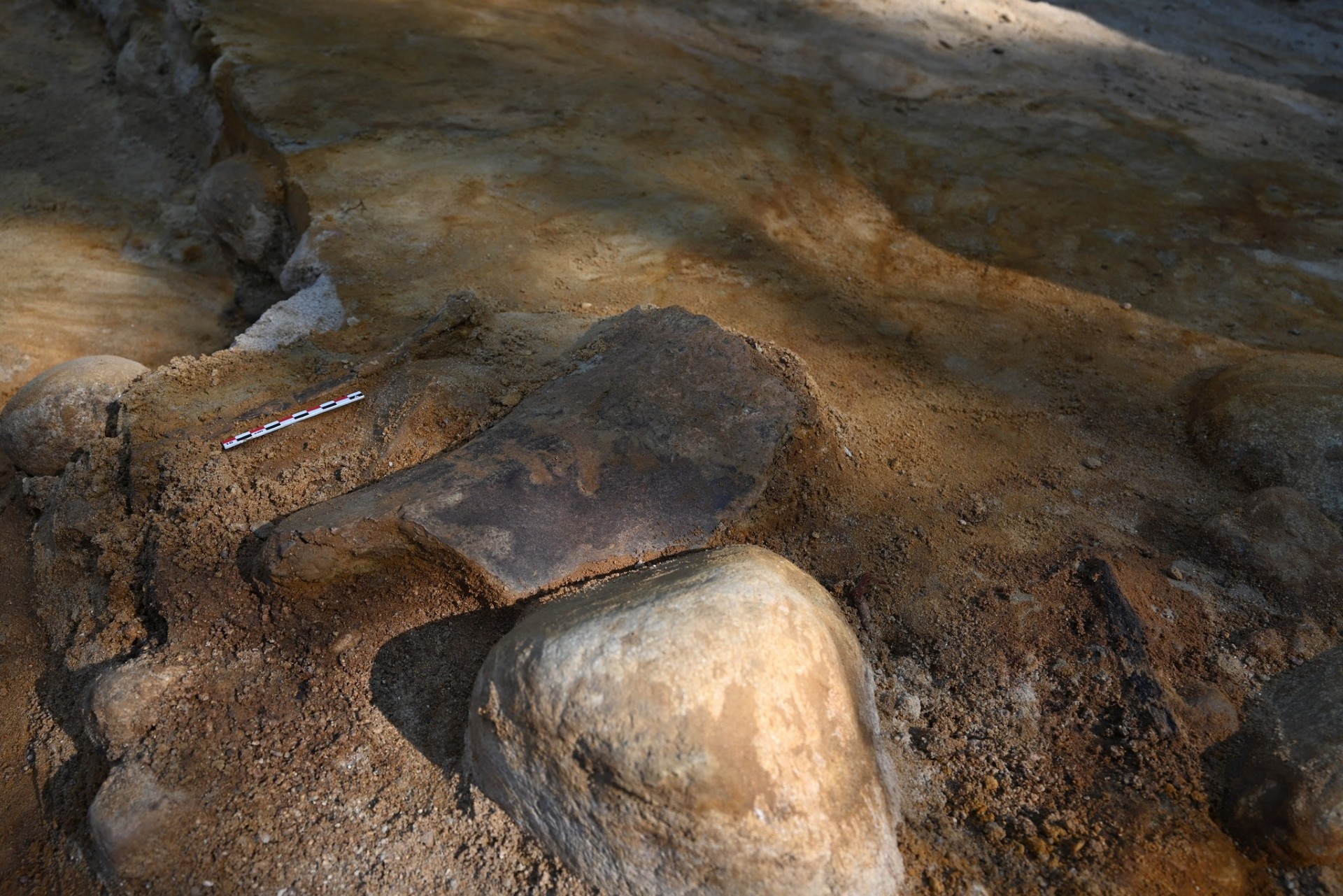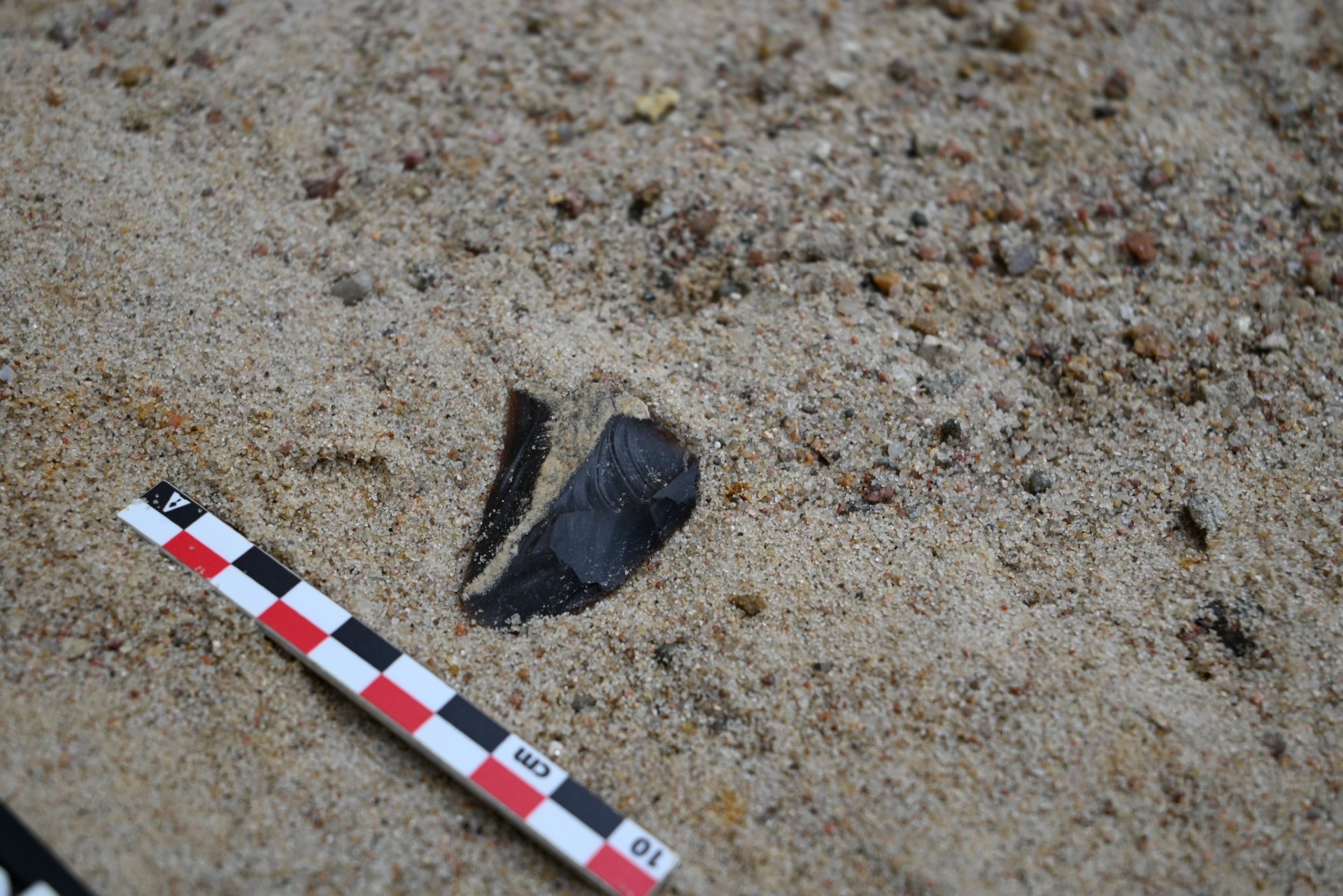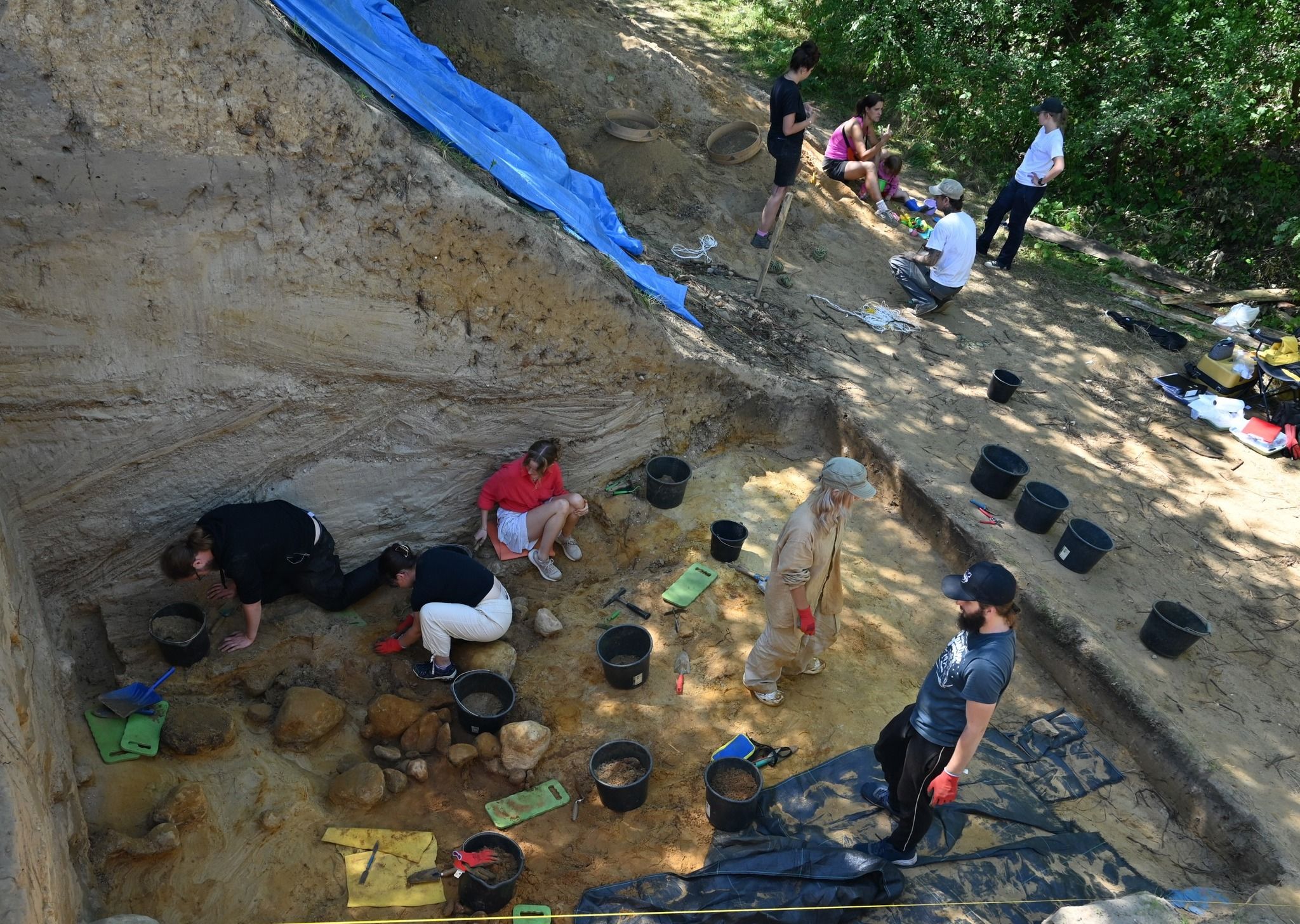Mazovia/ Paleolithic Neanderthal workshop on the Zwoleńka River

Neanderthals , who lived near Zwoleń in Masovia around 70,000 years ago, had a workshop there where they repaired tools used to butcher mammoths, horses, and even rhinos. Archaeologists from Warsaw and Wrocław are investigating the site.
Research at the Zvolen site was first conducted in the 1980s. It was then concluded – after analyzing numerous bone and flint materials – that Neanderthals had once inhabited the area. This makes it the northernmost Neanderthal site in Poland. One of the few where organic materials, namely bones, have been preserved. These are very rare at open Neanderthal sites, i.e., those located outside caves.
Today, the site is being re-examined by scientists from the State Archaeological Museum in Warsaw (PMA), the Faculty of Archaeology of the University of Warsaw, and the Institute of Archaeology of the University of Wrocław. They want to determine exactly when ancient people first appeared in the Zwoleńka Valley, what their diet was like, and what their daily lives were like.
"We managed to determine that Neanderthals were active in this location 64,000-75,000 years ago, i.e., during the Middle Paleolithic. This is the only Middle Paleolithic site in Poland where research is currently being conducted," project leader Dr. Witold Grużdź from the PMA told PAP.
He noted that the sediments used to date the site were so-called redeposited sediments. This means that the original site existed several meters away. Over time, however, the river began to erode the site, carrying away archaeological material.

"Our dates reflect the time at which these materials were moved, not when they were actually created. They could be even older, certainly not younger. We will attempt to solve this mystery in future studies," explained Dr. Grużdź.
During the three following seasons, archaeologists found mammoth bones, rhinoceros and horse teeth, as well as hundreds of smaller and larger flint artifacts dating back to Neanderthal times.
"From archival research from the 1980s, we had approximately 330 artifacts at our disposal. Last season alone, we recovered over 170 of them. This season, we also recovered a similar number," said the archaeologist.
These specimens, discovered in large numbers, include both tools , such as specific knives and currycombs, which were produced by Neanderthals, and waste from their production.
"Based on analogous data from Middle Paleolithic sites, we know that these types of tools were used to cut up animal carcasses and butcher game. The mammoths, rhinos, and horses whose bones we found were likely butchered with these tools," explained Dr. Katarzyna Pyżewicz from the University of Warsaw. "After successive seasons of research, we know that already finished tools were brought to the site and intensively repaired there. They wore out during the reactions associated with carcass butchering."

Most of the known Neanderthal sites in Poland come from the Kraków-Częstochowa Upland and the Lower Silesian Voivodeship. They are located primarily in the south – when Neanderthals were present in this part of Europe, most of central and northern Poland was covered by an ice sheet. The oldest Neanderthal remains identified in Poland to date come from Ciemna Cave and are approximately 115,000 years old.
"Neanderthal finds are rare finds. Whatever is happening in this field is of great value and provides new data. These sites are often hidden several meters below the surface, making them difficult to find," commented Dr. Pyżewicz.

Scientists consider Neanderthals to be "brothers" rather than ancestors of modern humans. They belonged to the extinct lineage of Homo sapiens. For a long time, representatives of this species were portrayed as rather primitive beings. However, research in recent years indicates that this species of human has much more in common with us than previously believed. Researchers have determined, among other things, that Neanderthals were the authors of some of the cave paintings known from European caves—those estimated to be over 64,000 years old. DNA studies, in turn, have revealed that modern humans interbred with Neanderthals.
Science in Poland, Ewelina Krajczyńska-Wujec (PAP)
ekr/ agt/ mhr/
The PAP Foundation permits free reprinting of articles from the Nauka w Polsce website, provided that you notify us by email once a month of your use of the website and cite the source of the article. On portals and websites, please include the linked address: Source: naukawpolsce.pl, and in journals, please include the annotation: Source: Nauka w Polsce website - naukawpolsce.pl. This permission does not apply to information in the "World" category or any photographs or video materials.
naukawpolsce.pl




